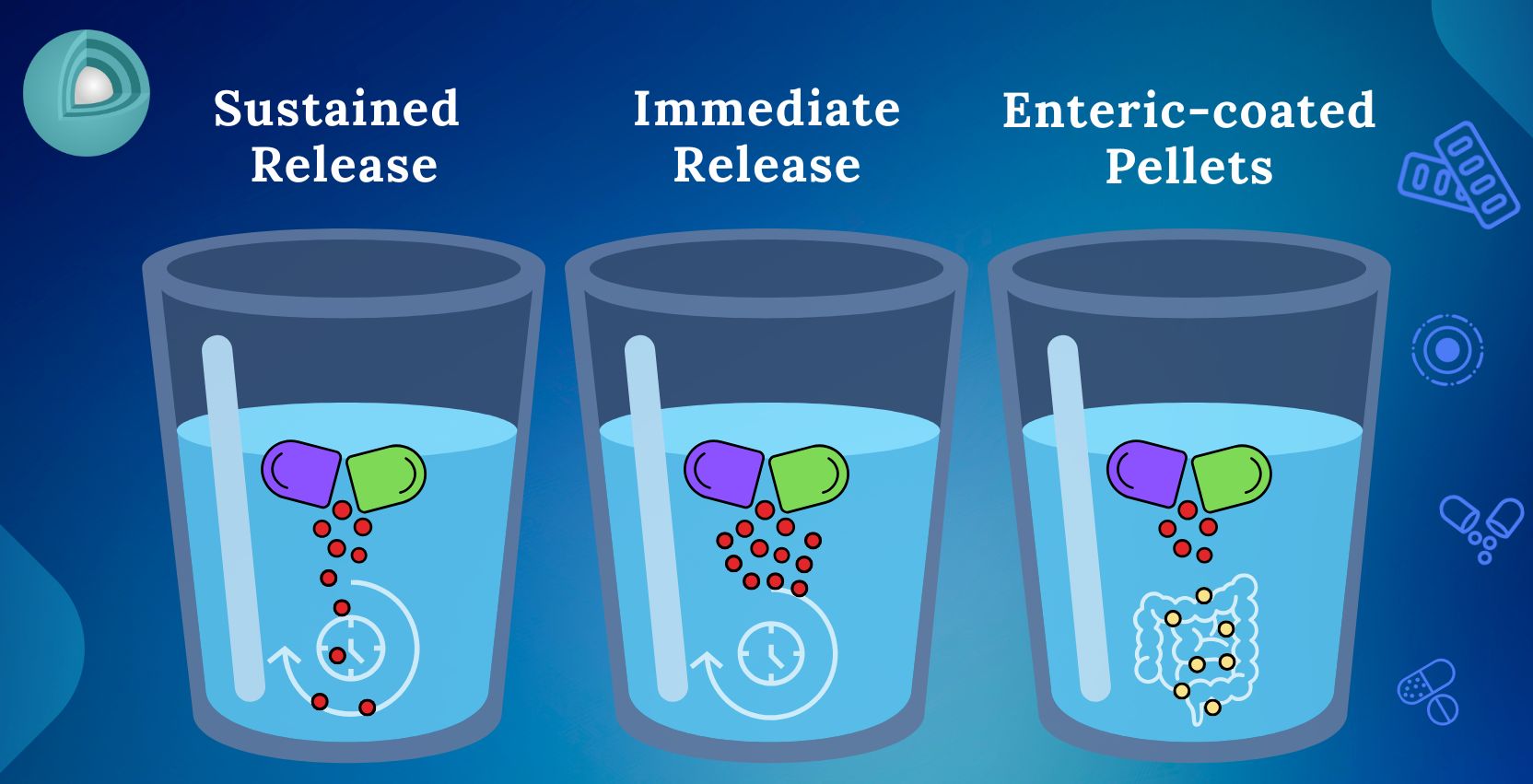
The Role of Multiparticulate Systems in Modern Pharmaceutical Development
Introduction
In this ever-evolving pharmaceutical industry, the way drugs are delivered into the body becomes equally important as the drug itself. One of the currently promising technologies in drug delivery systems is multiparticulate systems, which have revolutionized the way to take medicine for more effective, precise, and patient-friendly treatment options. But what really are these multiparticulate systems, and what makes them special? Let's try to understand.
What Are Multiparticulate Systems?
A multiparticulate system is a method of delivering drugs in which the drug is broken down into numerous tiny particles rather than being in one large pill. These small particles, like microscopic beads or granules, gradually and steadily release the drug throughout your body over time. This improves the medicine's effectiveness, extends its shelf life, and minimises the possibility of negative effects. It can also make it easier for patients to take, particularly those who have difficulty swallowing large doses. There are other additional benefits also; let us go over them in further depth.
Benefits of Multipaticulate System
• Enhanced Drug Absorption: Conventional tablets and capsules release the complete dose as burst relase, which can saturate the body's absorption capacity. Multiparticulate systems spread the drug out over time. This enables better absorption and ensures even effects.
• Sustained & Controlled Release:Sustained and controlled release refer to drug delivery systems designed to release medication at a consistent rate over an extended period, providing long-term therapeutic effects.
• The multiparticulate system allows the drug to be released slowly over a prolonged period, reducing the need for frequent dosing.
• Reduced Adverse Effects: Side effects can be minimised with a controlled release by multiparticulate systems. For example, if a drug is irritating to the stomach, release could be slow and thereby reduce irritation.
• Combination Drug Delivery: Multiparticulate systems can combine multiple drugs in a single dose, allowing different drugs to be delivered at the same time in fixed amounts. This simplifies treatment for patients who need to take more than one medication.
• Targeted Delivery: Multiparticulates can be coated with materials like enteric coatings, which prevent the drug from being released in the stomach. This is helpful for drugs that:
o Have an absorption window in the intestines.
o Are irritating to the stomach.
o Are unstable in the acidic environment of the stomach.
o This coating ensures that the drug is released only when it reaches the intestines, improving its effectiveness.
• Individualised Treatment: Every patient is different, and their bodies respond to drugs differently. Since multiparticulate systems can be manipulated in nature, extent, and depth of penetration, these are highly appropriate for individualised medicine. Depending on which of the three or a combination thereof produces the best outcome for the patient, a doctor can adjust the dosage, timing, and site of release from within the gastrointestinal tract.
• Convenient: Normally, children and older patients find it hard to swallow big pills. Multiparticulate systems can be formulated into suspensions, dry syrups, or reduced-size capsules to permit these patients to take medication with comfort.
Types of Multiparticulate Systems
There are different kinds of multiparticulate systems for different applications:
Pellets: These are small, round particles that can be filled into capsules or compressed into tablets. Pellets.
Granules: can be provided in a sachet, capsule, or offered sprinkled on food. The dissolution of such granules can be modulated to dissolve at different rates, depending on the desired effect.
Mini Tablet: Mini tablets are solid dosage forms with a diameter ? 3 mm, usually filled in capsules or compressed into large tablets.
Conclusion
Multiparticulate systems are a great innovation in the field of delivery of medicines within the body. Controlled, targeted, and tailor-made drug release by such systems significantly improves the treatment outcome, patient convenience, and reduces side effects. It is a cornerstone of modern development in pharmaceuticals. More of such applications can be expected as research and development continue to evolve.
References
• Aulton, M. E. & Taylor, K. M. G. (2017). Aulton's Pharmaceutics: The Design and Manufacture of Medicines. Elsevier Health Sciences.
• A.R. Rajabi-Siahboomi (2017), Multiparticulate Drug Delivery Formulation, Processing, and Manufacturing. Springer.
• Malaterre, V., Ogorka, J., Loggia, N., & Gurny, R. (2009). Oral osmotically driven systems: 30 years of development and clinical use. European Journal of Pharmaceutics and Biopharmaceutics, 73(3), 311-323.
• Vyas, S. P. & Khar, R. K. (2012). Controlled Drug Delivery: Concepts and Advances. CBS Publishers & Distributors.
• Wilson, C. G., & Crowley, P. J. (Eds.). (2011). Controlled Release in Oral Drug Delivery. Springer.







